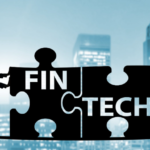
Introduction: A Glimpse into the Future of FinTech
In the rapidly evolving landscape of FinTech, the emergence of blockchain technology and Web 3.0 is ushering in an era of unprecedented change and opportunity. As a seasoned observer and participant in this realm, I’ve witnessed firsthand the transformative power of these technologies. From my previous explorations of blockchain’s potential in “The Blockchain Revolution” to delving into the implications of Web 3.0 on FinTech, it’s clear that we are at the cusp of a major shift.
The Stanford Proposal: A Catalyst for Debate
Recently, a proposal by Stanford University researchers has sparked a significant debate within the crypto community. Suggesting reversible transactions on Ethereum, this proposal, as detailed in my piece on “Stanford Proposal for Reversible Ethereum Transactions,” raises critical questions about the delicate balance between security, decentralization, and user convenience. It’s a vivid illustration of the ongoing conflict between DeFi’s foundational principles and the urgent need for user protection.
Blockchain and FinTech: A Synergistic Relationship
The integration of blockchain into FinTech, as discussed in my article “How Web 3.0 will Impact the FinTech Industry,” is not just about enhancing existing systems but reimagining them. Blockchain, with its decentralized nature, offers unprecedented security, transparency, and efficiency. This technology is revolutionizing everything from loan origination to digital payments, echoing the sentiments of PwC’s research on FinTech’s growing influence.
Web 3.0: The New Frontier in FinTech
Web 3.0, with its decentralized and intelligent internet services, is set to further reshape the FinTech landscape. As I explored in my previous writings, this new internet era will leverage technologies like AI and IoT to provide more personalized, secure, and efficient financial services. The convergence of blockchain, AI, and IoT under the umbrella of Web 3.0 is a game changer, paving the way for innovations like decentralized identity verification systems and automated, data-driven decision-making in finance.
Drawing from my experiences, the impact of these technologies is not just theoretical. Whether it’s seeing the efficiency of blockchain in action within supply chain management or the potential of AI in enhancing customer experiences, the practical applications are numerous and growing. For instance, the use of AI in understanding customer preferences or blockchain’s role in creating transparent supply chains are not just buzzwords but real, tangible advancements.
Conclusion: Navigating the Future with Caution and Optimism
In conclusion, as we navigate this exciting yet complex landscape, it’s crucial to strike a balance. The Stanford proposal highlights the need for flexibility within blockchain’s rigid structures, echoing the broader challenge of integrating innovative technologies while preserving core principles. As FinTech continues to evolve, staying informed and adaptive will be key to harnessing the full potential of blockchain and Web 3.0, always keeping in mind the need for consumer protection and ethical considerations.
For further insights into the world of blockchain and FinTech, feel free to revisit my previous articles:
Stay tuned for more updates and in-depth discussions on the latest trends in FinTech and blockchain technology.




